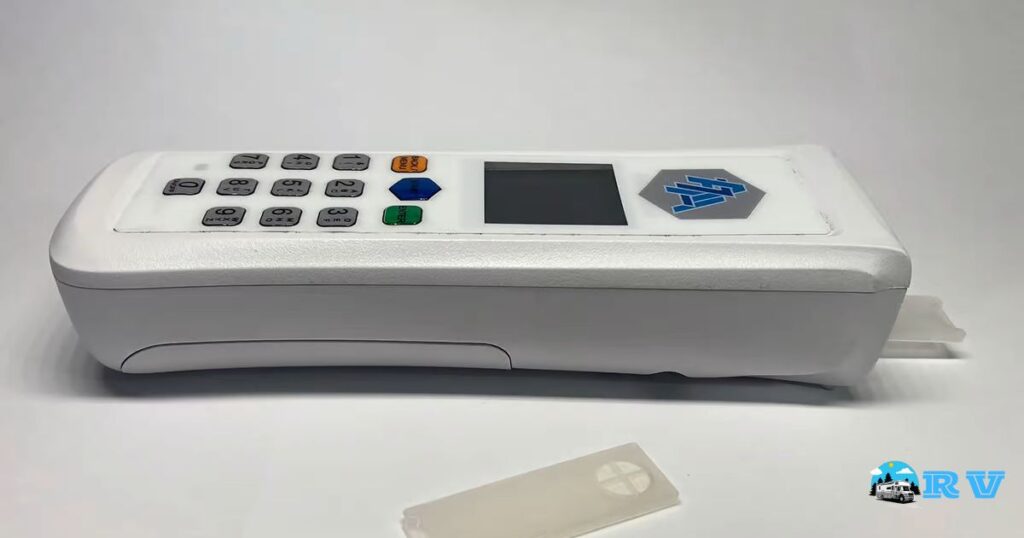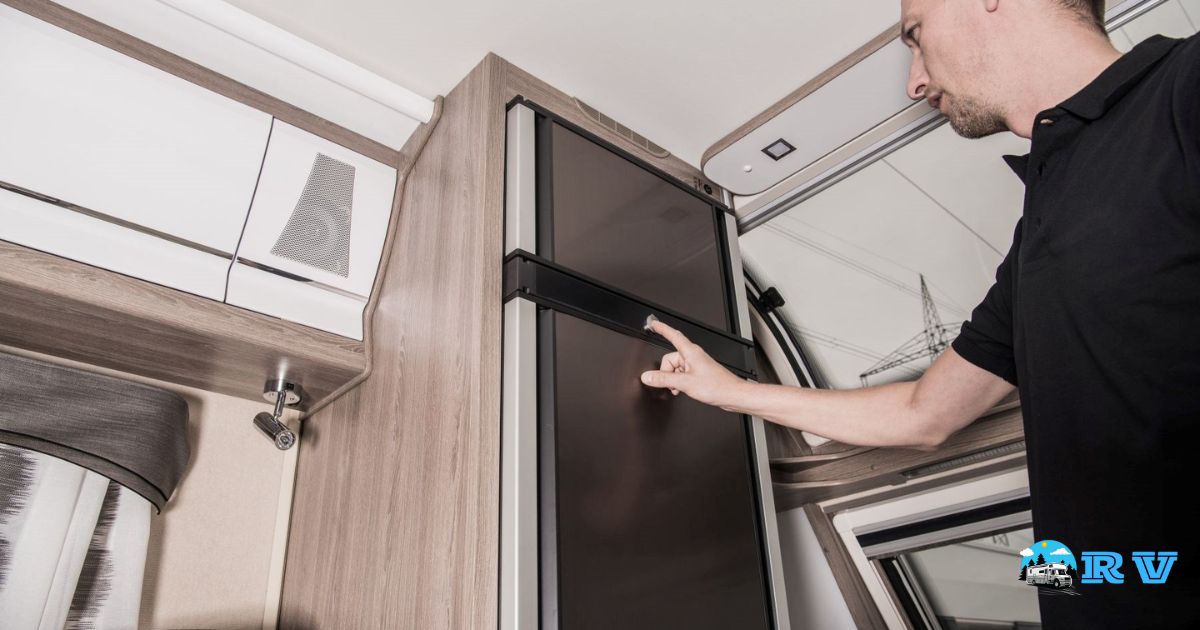Are you wondering how to check the ammonia level in your RV fridge? This process involves assessing the ammonia concentration within the cooling system of your RV refrigerator. It’s a crucial maintenance task to ensure your fridge functions efficiently, keeping your food cold and fresh while you’re on the road.
Curious about the inner workings of your RV fridge? Understanding how to check ammonia levels is essential for the well-being of your appliance. If you’ve ever encountered cooling issues or inconsistent temperatures in your RV fridge, learning this procedure can save you from costly repairs or replacements down the line.
When it comes to RV refrigeration, monitoring the ammonia level is a vital part of upkeep. Checking ammonia levels ensures that your fridge operates optimally and keeps your food and beverages cool during your travels. In the following paragraphs, we will explore the step by step process of how to check ammonia levels in your RV fridge, providing you with the knowledge to keep your on-the go lifestyle convenient and enjoyable.
Identifying Ammonia Leakage
Ammonia is a crucial component in the refrigeration systems of many RVs. It plays a vital role in keeping your food and drinks cold during your travels. However, when ammonia leaks occur, they can pose significant risks to both your RV’s functionality and your safety. In this section, we’ll discuss the dangers of ammonia leaks in RV fridges and how to identify them.
Leaks of Ammonia Are Dangerous
Ammonia is a colorless gas with a pungent odor that can be harmful when released into the confined space of an RV. It is important to understand the dangers associated with ammonia leaks to ensure your safety and the proper operation of your fridge.
Health Risks
Inhaling ammonia gas can lead to a range of health issues, including respiratory problems, eye irritation, and skin burns. Prolonged exposure to ammonia fumes can be especially dangerous, making it crucial to detect and address any leaks promptly.
Fire Hazard
Ammonia is highly flammable, and when it escapes into the air, it can create an explosive environment. This poses a significant fire hazard in your RV, putting your safety and the safety of your fellow travelers at risk.
Refrigerator Functionality
Ammonia is the key to your RV refrigerator’s cooling process. Any leaks can disrupt this process, leading to ineffective cooling and potential food spoilage. Identifying and addressing ammonia leaks is essential to maintain your fridge’s functionality.
Checking Ammonia Levels in RV Fridges
One of the most critical aspects of maintaining your RV fridge is checking and monitoring its ammonia levels. Regular checks can help you ensure that your fridge is operating efficiently and that any leaks are detected early.
Use an Ammonia Detector

An ammonia detector is a specialized tool designed to detect the presence of ammonia gas in the air. These devices are particularly useful for RV owners, as they can quickly alert you to potential leaks.
How to Use an Ammonia Detector
Using an ammonia detector is a straightforward process. Most detectors come with clear instructions. You typically need to turn the device on, allow it to warm up, and then move it around your RV, paying close attention to the area around the refrigerator. If the detector senses ammonia, it will sound an alarm or display a warning.
Use Phenolphthalein Paper
Phenolphthalein paper is a simple and cost-effective method for checking ammonia levels in your RV fridge. This method relies on a color change reaction to indicate the presence of ammonia.
How to Use Phenolphthalein Paper
- Obtain phenolphthalein paper, which is readily available at many hardware and scientific supply stores.
- Cut a small strip of the paper.
- Place the strip in the vicinity of your RV fridge, focusing on areas where you suspect leaks or ammonia buildup.
- Monitor the paper for any color change. If it turns pink, it indicates the presence of ammonia.
Using phenolphthalein paper is a convenient way to perform routine checks for ammonia leaks in your RV fridge.
Using Detection Cloth
Detection cloth, also known as ammonia test strips, is another practical option for checking ammonia levels. Similar to phenolphthalein paper, these test strips change color in the presence of ammonia.
How to Use Detection Cloth
- Obtain ammonia detection cloth or test strips.
- Cut a small piece of the cloth or use a test strip.
- Place it in areas where ammonia leaks are suspected, such as around the refrigerator’s cooling unit.
- Observe any color changes on the cloth or test strip. A color change to blue or dark green indicates the presence of ammonia.
Using detection cloth is a user-friendly method to regularly monitor ammonia levels in your RV fridge.
Comparison of Ammonia Detection Methods
| Method | Ease of Use | Cost | Sensitivity |
| Ammonia Detector | Easy | Moderate | High |
| Phenolphthalein Paper | Very Easy | Low | Moderate |
| Detection Cloth | Easy | Low | Moderate |
This table provides a quick comparison of the various methods for checking ammonia levels in your RV fridge. Consider your preferences and budget when choosing the most suitable detection method for your needs.
Managing Ammonia Leaks
Once you’ve identified an ammonia leak in your RV fridge, it’s essential to take immediate action to manage the situation. Ensuring the safety of your RV is paramount, and one vital precaution you should always keep in mind is to keep the RV refrigerator door closed while traveling. Here, we’ll explore some key steps to effectively address ammonia leaks and safeguard your RV.
Provide Adequate Ventilation
Ventilation is crucial when dealing with an ammonia leak. Proper ventilation helps disperse the gas, reducing the risk of inhalation and creating a safer environment inside your RV.
How to Ventilate the Area
- Open all windows and doors to allow fresh air to enter the RV.
- Turn off the refrigerator and any gas appliances in the RV.
- Avoid using electrical switches, as they can create sparks that may ignite the ammonia gas.
- Wait outside until the area is adequately ventilated and safe to re-enter.
Install a New Cooling System
If your RV fridge experiences a significant ammonia leak, it may be necessary to replace the cooling unit. This is a more complex and costly solution but is sometimes the only option to ensure the long-term functionality of your refrigerator.
Replacing the Cooling Unit
Replacing the cooling unit typically requires professional assistance, as it involves disconnecting and removing the old unit and installing a new one. This process can be intricate and may vary depending on your RV refrigerator model.
What Are the Symptoms of an Ammonia Leak in Your RV Fridge?
Understanding the signs and symptoms of an ammonia leak in your RV fridge is crucial for early detection and prevention of potential hazards.
Be on the Lookout for Yellow Stains
Ammonia leaks can sometimes result in visible yellow stains in and around your RV fridge. These stains are a clear indication of a leak and should not be ignored.
Keep an Eye Out for Smells
Ammonia has a strong and pungent odor, which is often described as sharp or acrid. If you notice an unusual smell, especially near your RV fridge, it could be a sign of an ammonia leak.
Make Sure the Coils of the Refrigerator are Hot
Normally, the coils at the back of your RV fridge should dissipate heat efficiently. If you touch these coils and they feel excessively hot, it may be a sign that the cooling unit is malfunctioning, potentially due to an ammonia leak.
Troubleshooting High Ammonia Levels
If your checks reveal consistently high ammonia levels in your RV fridge, it may indicate an ongoing issue that requires further investigation and resolution.
To troubleshoot and address high ammonia levels, consider the following steps:
- Check for Faulty Seals: Damaged or worn-out seals on your fridge’s doors can lead to ammonia leaks. Inspect the seals for any visible issues and replace them if necessary.
- Clean the Ventilation System: A dirty or obstructed ventilation system can impede the dissipation of heat and potentially lead to high ammonia levels. Regularly clean the vents and ensure they are free from debris.
- Consult a Professional: If you are unable to determine the cause of consistently high ammonia levels, it’s advisable to consult a professional RV technician. They can perform a comprehensive inspection and recommend the appropriate repairs or replacements.
Leaks of ammonia are dangerous
Leaks of ammonia are dangerous. Ammonia is a pungent and colorless gas commonly used in refrigeration, cleaning products, and agriculture. In more severe cases, ammonia exposure can cause difficulty breathing and can be life threatening. Therefore, it’s crucial to handle and store ammonia safely to prevent leaks and protect both human health and the environment.
Furthermore, ammonia leaks can have detrimental effects on the environment. Ammonia released into the atmosphere can contribute to air pollution and have adverse impacts on ecosystems. It can react with other pollutants in the air and lead to the formation of fine particulate matter, which is harmful to respiratory health.
FAQs
How do I check the ammonia level in my RV fridge?
You can use an ammonia detector to monitor ammonia levels in your RV fridge’s cooling system.
Why is it important to identify ammonia leaks in my RV fridge?
Identifying ammonia leaks is crucial to prevent health hazards and maintain your fridge’s efficiency.
What are the dangers of ammonia leaks in an RV fridge?
Ammonia leaks can lead to respiratory issues, eye irritation, and other health problems, making them a serious safety concern.
How can I troubleshoot high ammonia levels in my RV fridge?
Troubleshooting high ammonia levels may involve addressing leaks, ensuring proper ventilation, or seeking professional assistance.
What can I do to maximize the efficiency of my RV fridge?
To maximize efficiency, maintain the right temperature, organize items effectively, use refrigerator fans, limit door openings, and check door seals and gaskets.
Conclusion
In the world of RVing, keeping your fridge in top shape is more than just a maintenance task; it’s a safety imperative. By checking the ammonia levels, you ensure that your refrigerator operates smoothly, preventing dangerous leaks and potential health hazards. Your journey becomes all the more enjoyable when you can rely on your RV fridge to keep your food fresh and your adventures worry free.
So, whether you’re using an ammonia detector, managing leaks, or optimizing efficiency, remember that a well-maintained RV fridge is your trusted companion on the road. Stay safe, keep cool, and savor the moments as you embark on your RV adventures with confidence.











